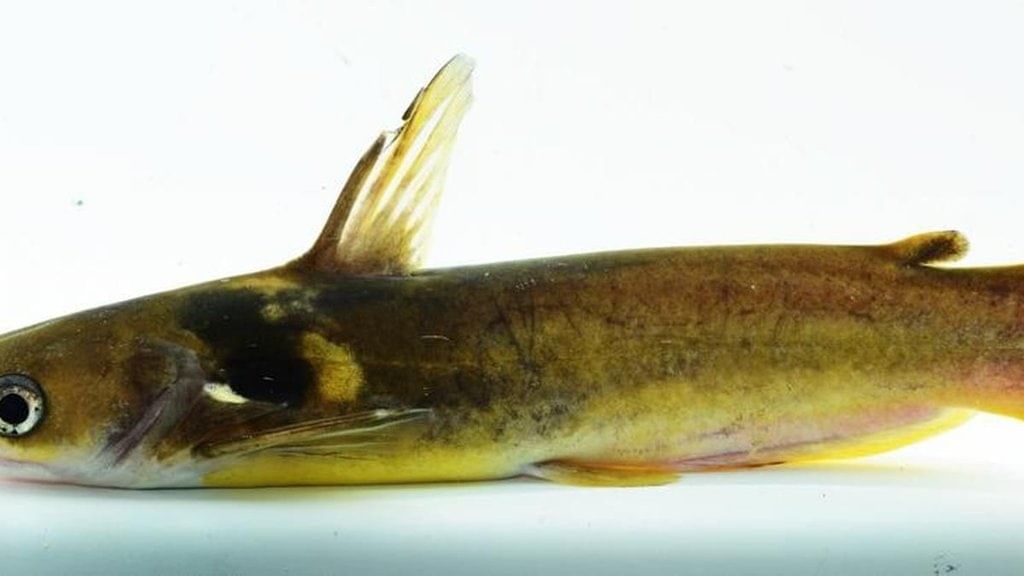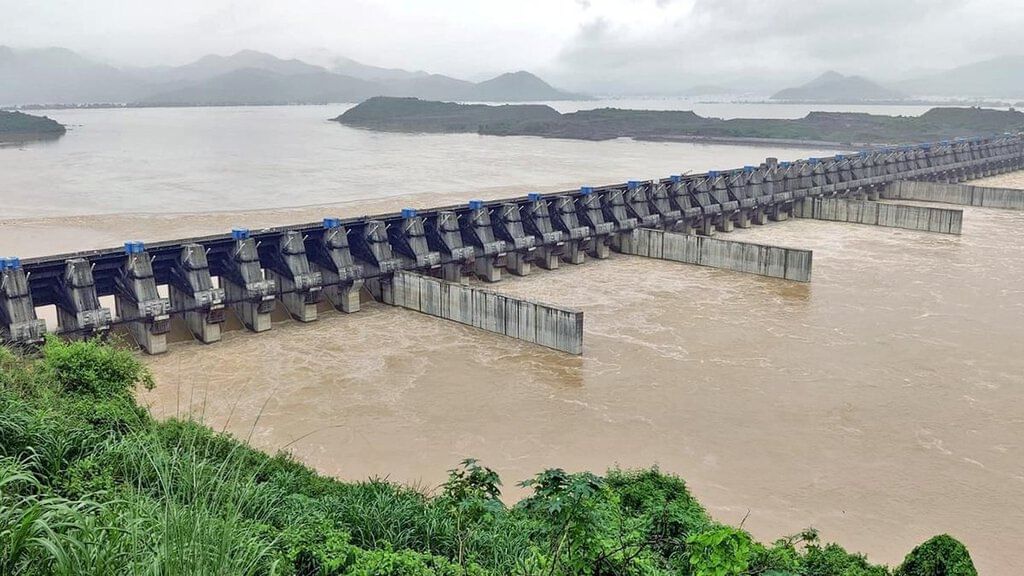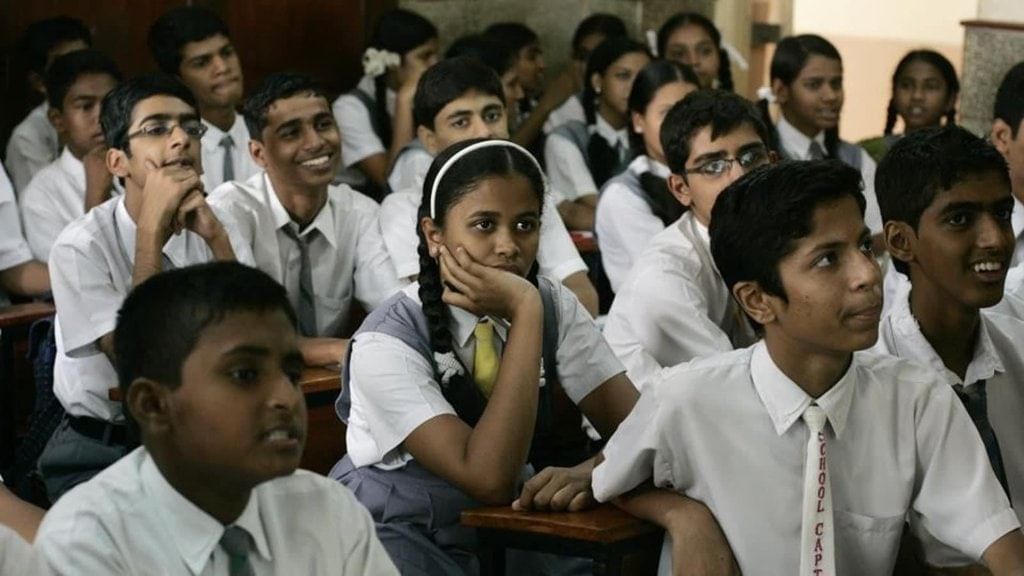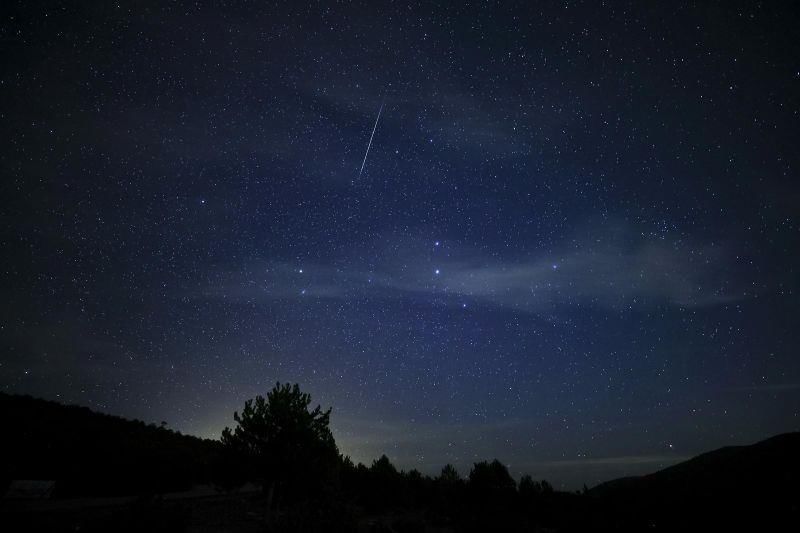UPSC Daily Current Affairs: 5th January 2025 | Current Affairs & Hindu Analysis: Daily, Weekly & Monthly PDF Download
GS3/Economy
Export Inspection Council's Gap Assessment Study on Food Testing Infrastructure
Source: The Indian Express
Why in News?
The Export Inspection Council (EIC) has recently launched a comprehensive gap assessment study focused on improving food testing infrastructure for exports. This initiative aims to enhance the quality and safety of food products exported from India.
- The EIC was established by the Government of India under the Export (Quality Control and Inspection) Act, 1963.
- It serves as the official export-certification body of India, ensuring the quality and safety of exported products.
- The Council is headed by a Chairperson, with the day-to-day operations managed by the Director of Inspection & Quality Control.
Additional Details
- Function of EIC: The EIC ensures that products listed under the Export (Quality Control and Inspection) Act, 1963 comply with the quality and safety standards required by importing countries.
- Mandatory Certification:EIC provides compulsory certification for various food items, including:
- Fish and fishery products
- Dairy products
- Honey
- Egg products
- Meat and meat products
- Poultry meat products
- Animal casing
- Gelatine
- Ossein and crushed bones
- Feed additives and pre-mixtures
- Other food and non-food products are certified on a voluntary basis.
- The EIC operates through Export Inspection Agencies (EIAs) located in Mumbai, Kolkata, Kochi, Delhi, and Chennai, supported by a network of 30 sub-offices and NABL-accredited laboratories.
- Headquarter: The EIC is under the nodal ministry of the Ministry of Commerce and Industry.
This initiative by the Export Inspection Council is a significant step towards bolstering India's export capabilities by ensuring that food products meet international standards, thereby enhancing the country's export trade.
GS2/Governance
DPIIT Deregisters Patent Agent Over Alleged Misconduct
Source: The Indian Express
 Why in News?
Why in News?A patent agent has been removed from the Register of Patent Agents for “alleged professional misconduct” by a committee formed by the Department for Promotion of Industry and Internal Trade (DPIIT).
- The patent agent, Naveen Chaklan, was found guilty of negligence leading to client harm.
- The DPIIT has made significant amendments to the Patents Act to improve accountability among patent agents.
Additional Details
- Definition of Patents: A patent is a type of intellectual property right that grants an inventor exclusive rights over their invention for a limited time, as approved by the government, preventing unauthorized use.
- Types of Patents:
- Product Patent: Protects the final product, ensuring exclusive rights for the patent holder.
- Process Patent: Allows others to produce the patented product by changing the manufacturing process.
- Historical Context in India: India initially adopted process patenting in the 1970s, becoming a leader in generic drugs production, and later introduced product patenting post-TRIPS Agreement.
- Patent Act, 1970: Established to replace older laws, it was based on the Ayyangar Committee Report and aimed to enhance patent protection in India.
- National IPR Policy, 2016: Aims to create awareness, foster innovation, and ensure efficient administration of IPRs.
In a landmark decision, Naveen Chaklan was removed from the Register of Patent Agents due to professional misconduct, following a case where he failed to notify a client about the abandonment of their patent application. This highlights the need for accountability and ethical standards in the patenting process, and the High Court has directed the creation of a Code of Conduct for patent agents to prevent similar issues in the future.
GS3/Environment
Conservation Efforts for Black-Collared Yellow Catfish
Source: The Hindu
 Why in News?
Why in News?Researchers from the Centre for Peninsular Aquatic Genetic Resources, Kochi, affiliated with the National Bureau for Fish Genetic Resources (NBFGR), have developed a successful captive breeding protocol for the black-collared yellow catfish, an endangered species native to Kerala.
- The black-collared yellow catfish is endemic to the Chalakudy River in Kerala.
- This species is characterized by its greenish-brown mottled coloration, shorter barbels, and unique genetic traits.
- It coexists with the endangered species Horabagrus Nigricollaris.
- The fish has been classified as endangered on the IUCN Red List.
- The captive breeding program initiated in 2020 has successfully produced the first generation of this species.
- The breeding technique developed is crucial for the conservation of the black-collared yellow catfish.
Additional Details
- National Bureau for Fish Genetic Resources (NBFGR): Established in 1983 in Allahabad (Prayagraj), NBFGR operates under the Indian Council of Agricultural Research and focuses on the conservation of fish germplasm resources across the country.
- Vision: The bureau aims to assess and conserve fish genetic resources for sustainable utilization and to safeguard these resources for future generations.
The development of a captive breeding protocol is a significant step towards ensuring the survival of the black-collared yellow catfish, contributing to the broader efforts in biodiversity conservation in India.
GS3/Science and Technology
Key Facts about Cowpea
Source: Nature
Why in News?
ISRO recently announced that the cowpea seeds it launched into space aboard the PSLV-C60 POEM-4 platform have successfully germinated under microgravity conditions within just four days of the mission's launch.
- Cowpea (Vigna unguiculata) is an annual leguminous plant within the pea family (Fabaceae).
- This crop features long trailing vines and produces seeds that can be black, white, or red, widely used in various culinary preparations.
- Cowpea originated in Southern Africa and later spread to East and West Africa and Asia.
- It is commonly referred to as black-eyed pea or southern pea.
Additional Details
- Plant Characteristics: Cowpeas are typically climbing or trailing vines that bear compound leaves with three leaflets.
- Nutritional Value: The grains of cowpea contain 25% protein, along with several vitamins and minerals, making it a nutritious food source.
- Soil and Climate Adaptability: The plant tolerates drought and thrives in a variety of soil types. It is particularly effective in replenishing low-fertility soils when the roots decay.
- Well-drained loam or slightly heavy soil is optimal for cowpea cultivation, while sandy soil is preferred in colder climates as it allows crops to mature earlier.
- Cowpea is primarily grown by small-scale farmers in developing regions, often cultivated alongside other crops due to its shade tolerance and rapid ground cover, which helps prevent soil erosion.
- Global Production: Nigeria stands as the world's largest producer and consumer of cowpea, accounting for over 46% of global production. In total, Nigeria contributes to more than 87% of the world's cowpea production and usage.
- Indian Context: In India, cowpea is considered a minor pulse and is mainly cultivated in the arid and semi-arid regions of Punjab, Haryana, Delhi, West Uttar Pradesh, and has significant cultivation areas in Rajasthan, Karnataka, Kerala, Tamil Nadu, Maharashtra, and Gujarat.
The successful germination of cowpea seeds in space highlights the potential for cultivating crops in challenging environments, which could have significant implications for food security and agricultural practices on Earth.
GS3/Science and Technology
Rabbit Fever
Source: The Indian Express
Why in News?
Recent reports indicate a more than 50% increase in cases of 'rabbit fever' in the United States, highlighting this rare yet serious infectious disease.
- 'Rabbit fever' is a rare and potentially lethal disease primarily affecting certain populations.
- The disease is caused by the bacterium Francisella tularensis, which can infect both animals and humans.
Additional Details
- At-Risk Populations: Children aged 5-9 years, older men, and American Indians or Alaska Natives are more susceptible to infection.
- Symptoms:The symptoms of tularemia can vary based on the transmission route and may include:
- High-grade fever
- Skin ulcers (typically after a tick or deer fly bite)
- Eye irritation and inflammation
- Breathing difficulties
- Sore throat and mouth ulcers
- Transmission Methods:Infection can occur through various means, including:
- Bites from ticks and deer flies
- Contact with infected animals such as rabbits and rodents
- Consumption of contaminated water
- Inhalation of contaminated aerosols or dust from agricultural activities
- Exposure in laboratory settings
- Treatment Options: Currently, there is no available vaccine for tularemia in the U.S.; however, the condition can be effectively treated with antibiotics.
In summary, rabbit fever is a concerning infectious disease with rising incidence rates. Awareness of its symptoms, transmission, and treatment options is essential for prevention and management.
GS3/Environment
Polavaram Project
Source: Times of India
 Why in News?
Why in News?The Telangana government has decided to engage experts from the Indian Institute of Technology, Hyderabad (IIT-H), to assess the impact of the Polavaram project on the Godavari River. This initiative underscores the project's significance in regional water management and environmental considerations.
- The Polavaram Project is a multi-purpose irrigation initiative located in the West and East Godavari districts of Andhra Pradesh.
- It aims to address water scarcity, enhance agricultural productivity, and generate hydropower.
- The dam features a span of approximately 1.2 km, with a pier height of 54 meters and 48 radial gates (16m x 20m).
- Designed to withstand significant floods, the Polavaram Spillway is expected to have the highest discharge capacity globally.
- It has been designated as a national project by the central government.
Additional Details
- Irrigation Potential: The project aims to develop a gross irrigation potential of 436,825 hectares, significantly benefiting agricultural practices in the region.
- Hydropower Generation: The project is expected to generate 960 MW of hydropower, contributing to the energy needs of the area.
- Drinking Water Supply: It will provide drinking water to approximately 2.85 million people across 611 villages.
- Water Diversion: The project plans to divert 80 TMC of water to the Krishna River basin, enhancing water distribution.
- The dam will also assist in managing floodwaters from the Godavari River, minimizing risks to nearby communities.
This project represents a crucial advancement in India's infrastructure for water management, aiming to balance agricultural needs, energy production, and community safety.
GS1/History & Culture
Discovery of Saint Narahari Tirtha's Idol
Source: Deccan Chroncile
 Why in News?
Why in News?A significant archaeological find has emerged as a member of the Team of Research on Culture and Heritage (TORCH) recently uncovered a three-foot idol of the 13th-century saint, Narahari Tirtha.
- Narahari Tirtha was a notable Dvaita Vedanta philosopher and a disciple of Madhvacharya.
- He played a crucial role in promoting Dvaita philosophy in eastern India, especially in the Kalinga region.
- The saint's lineage traces back to aristocrats of the Gajapati empire in modern Odisha.
Additional Details
- Narahari Tirtha: Born around the 13th century, he was instrumental in the spread of Dvaita philosophy and contributed significantly to temple administration. His efforts ensured that the kings adhered to Sanatana Dharma and supported temple activities.
- He is recognized for his writings, including the Gita Bhasya and Bhavaprakasika, and is credited with composing Devaranamas in Kannada.
- Narahari Tirtha's influence extended to various art forms, notably the Yakshagana Bayalada dance-drama and the classical dance form known as Kuchipudi.
- Upon his passing, he was consecrated near the rock by Chakratirtha at Hampi, signifying his lasting impact on the region's spiritual traditions.
The discovery of the idol not only highlights Narahari Tirtha's historical significance but also reinforces the cultural heritage linked to the temple traditions of Puri Jagannath, further strengthening the Madhva influence in Odisha.
GS1/History & Culture
Rani Velu Nachiyar: A Symbol of Courage
Source: Hindustan Times
 Why in News?
Why in News?The Prime Minister of India recently commemorated the brave Rani Velu Nachiyar on her birth anniversary, highlighting her significant contributions to India's struggle for independence.
- Rani Velu Nachiyar was born on January 3, 1730, in Ramanathapuram.
- She was the only child of Raja Chellamuthu Vijayaragunatha Sethupathy and Rani Sakandhimuthal of the Ramnad kingdom.
- At the age of 16, she married Muthuvadugananthur Udaiyathevar, the prince of Sivaganga.
- She is affectionately known as Veeramangai by Tamils.
Additional Details
- Military Training: Rani Velu Nachiyar was well-trained in various combat skills, including martial arts such as Valari and Silambam (stick fighting), along with horse riding and archery.
- Scholarship: Apart from her martial prowess, she was a scholar fluent in multiple languages including English, French, and Urdu.
- Resistance Against the British: In alliance with Hyder Ali and Gopala Nayaker, she led a successful campaign against British colonizers, becoming the first queen in India to fight for freedom.
- In 1780, she granted administrative powers to the Marudu brothers to govern the region.
Rani Velu Nachiyar remains a prominent figure in Indian history, exemplifying bravery and leadership in the face of colonial oppression. Her legacy continues to inspire generations in the quest for freedom and justice.
GS3/Science and Technology
 |
Download the notes
UPSC Daily Current Affairs: 5th January 2025
|
Download as PDF |
What is Nanopore Technology?
Source: Nature
Why in News?
Nanopore technology has emerged as a critical tool in the fight against various diseases, providing innovative solutions for molecular analysis and sequencing.
- Nanopore technology involves nano-scale holes in a membrane that detect changes when charged biological molecules pass through.
- This technology is capable of sensing and analyzing single molecules such as amino acids, DNA, and RNA.
- It offers a cost-effective and user-friendly approach to DNA and RNA sequencing.
- Real-time analysis is possible, accommodating various sample sizes from individual to population levels.
Additional Details
- Sequencing Method: Nanopore technology sequences DNA and RNA by monitoring changes in electrical conductivity as molecules pass through the nanopore.
- Advantages: Compared to traditional sequencing technologies, it is less expensive, requires minimal computational resources, and only a small amount of DNA is necessary for testing.
- This technology supports the analysis of native DNA or RNA and can generate fragments ranging from short to ultra-long read lengths.
- It also enables targeted sequencing, allowing researchers to focus on specific genes or regions of interest.
In conclusion, nanopore technology stands out as a groundbreaking advancement in molecular biology, offering real-time and scalable solutions for genomic analysis that could significantly aid in early disease detection and research.
GS3/Science and Technology
Key Facts about Europa
Source: Forbes
Why in News?
Recent discoveries have revealed that the icy crust of Europa, one of Jupiter's moons, is significantly thicker than previously believed. This finding raises concerns about the potential for discovering the essential ingredients for life in the salty oceans that lie beneath its surface.
- Europa is the smallest and second closest of Jupiter's four largest moons, known as the Galilean satellites, discovered by Galileo in 1610.
- The moon features a rocky core beneath an extremely smooth and intricately patterned ice surface.
- With a diameter of 3,130 km, Europa is slightly smaller than Earth's Moon.
- It is considered one of the most promising locations in our solar system for finding environments that could support life.
- Scientists speculate that a vast saltwater ocean exists beneath Europa's icy shell, containing twice the amount of water found in Earth's oceans.
- Europa may also harbor essential chemical elements necessary for life.
- The moon was first closely observed by the Voyager 1 and Voyager 2 spacecraft in 1979, followed by the Galileo orbiter in the mid-1990s.
- NASA launched the Europa Clipper mission on October 14, 2024, aimed at exploring the moon's surface and subsurface for signs of life.
Additional Details
- Europa's Surface: Europa's surface is characterized by its smooth ice and complex patterns, suggesting geological activity beneath.
- Potential for Life: The presence of a subsurface ocean and the necessary chemical elements make Europa a key target in the search for extraterrestrial life.
- Continued exploration of Europa is crucial for understanding its environment and the possibility of life beyond Earth.
In summary, Europa represents a significant focus for scientists interested in astrobiology, with its potential subsurface ocean and unique surface characteristics offering a tantalizing glimpse into the possibility of life in our solar system.
GS2/Polity
Rollback of the No-Detention Policy
Source: The Hindu
 Why in News?
Why in News?In December 2024, the Union government amended the Rules of the Right to Education (RTE) Act, 2009, which allows schools, including Central government-run schools, to detain students in Classes 5 and 8 if they fail year-end examinations. This decision responds to significant challenges in the educational system, particularly concerning student learning outcomes.
- The no-detention policy was initially aimed at creating a stress-free learning environment.
- Challenges in implementation led to the rollback of this policy.
- Experts highlight alarming learning gaps in basic literacy and numeracy among students.
- The rollback aims to address these gaps and improve accountability in education.
Additional Details
- Original No-Detention Policy under RTE Act (2009): This policy prohibited the detention or expulsion of students from Classes 1 to 8, promoting a more relaxed educational atmosphere.
- Challenges in Implementation:
- Misinterpretation of No-Detention Policy: Many schools misapplied the policy, leading to a lack of testing and reduced accountability for teaching outcomes.
- Automatic Promotions: Government schools often promoted students without assessing their grade-specific skills.
- Lack of Focus on Outcomes: Monitoring systems emphasized inputs instead of actual learning results.
- Failure of Continuous and Comprehensive Evaluation (CCE):
- Implementation Issues: Despite efforts to introduce CCE, inadequate resources and lack of teacher training hindered success.
- Poor Execution: Teachers filled out CCE forms without assessing individual student skills.
- Abandonment of CCE: Many educational boards reverted to traditional examinations, neglecting the CCE model.
- Learning Gaps: Surveys indicate significant deficits in basic skills among students, with the ASER report revealing declines in literacy and arithmetic proficiency.
The decision to roll back the no-detention policy stems from the need to address these critical learning gaps and ensure better educational outcomes. Experts call for improved systems to assess children's learning rather than merely reverting to detention practices. A focus on timely remedial action and accountability for teachers is essential for the future of education.
GS3/Science and Technology
Quadrantid Meteor Shower
Source: Mint
 Why in News?
Why in News?The Quadrantid meteor shower is set to occur this month, marking the first meteor shower of the year. This event is notable for its intensity and brief peak, making it a significant astronomical phenomenon.
- The Quadrantids occur annually in early January.
- This meteor shower is known for its brief peak, lasting only a few hours.
- It is named after the now-defunct constellation Quadrans Muralis, established by French astronomer JJ Lalande in 1975.
- The first observation of the Quadrantids was made in the 1830s by Belgian astronomer Adolphe Quetelet.
Additional Details
- Origin: The Quadrantid meteor shower originates from the northeast part of the Boötes constellation.
- Source: This meteor shower is believed to have emerged from asteroid 2003 EH1, which is a fragment of an extinct comet that disintegrated around 1490-91.
- During its peak activity, observers can see between 60 to 120 meteors per hour, although visibility is highly dependent on geographical location and timing.
- This year, viewing conditions are particularly favorable for North America, especially residents of Mississippi. Other regions likely to witness the shower include Canada, parts of Northern Europe, and countries such as Russia, China, Japan, and Korea.
In summary, the Quadrantid meteor shower represents a remarkable astronomical event that offers an opportunity for stargazers to observe a spectacular display of meteors, especially in favorable locations.
|
39 videos|4818 docs|1041 tests
|
FAQs on UPSC Daily Current Affairs: 5th January 2025 - Current Affairs & Hindu Analysis: Daily, Weekly & Monthly
| 1. What is the significance of the Export Inspection Council's Gap Assessment Study on Food Testing Infrastructure? |  |
| 2. What led to the deregistration of the Patent Agent by DPIIT? |  |
| 3. What are the conservation efforts being undertaken for the Black-Collared Yellow Catfish? |  |
| 4. What are some key facts about Cowpea that make it an important crop? |  |
| 5. What is Rabbit Fever and what are its implications for public health? |  |






















